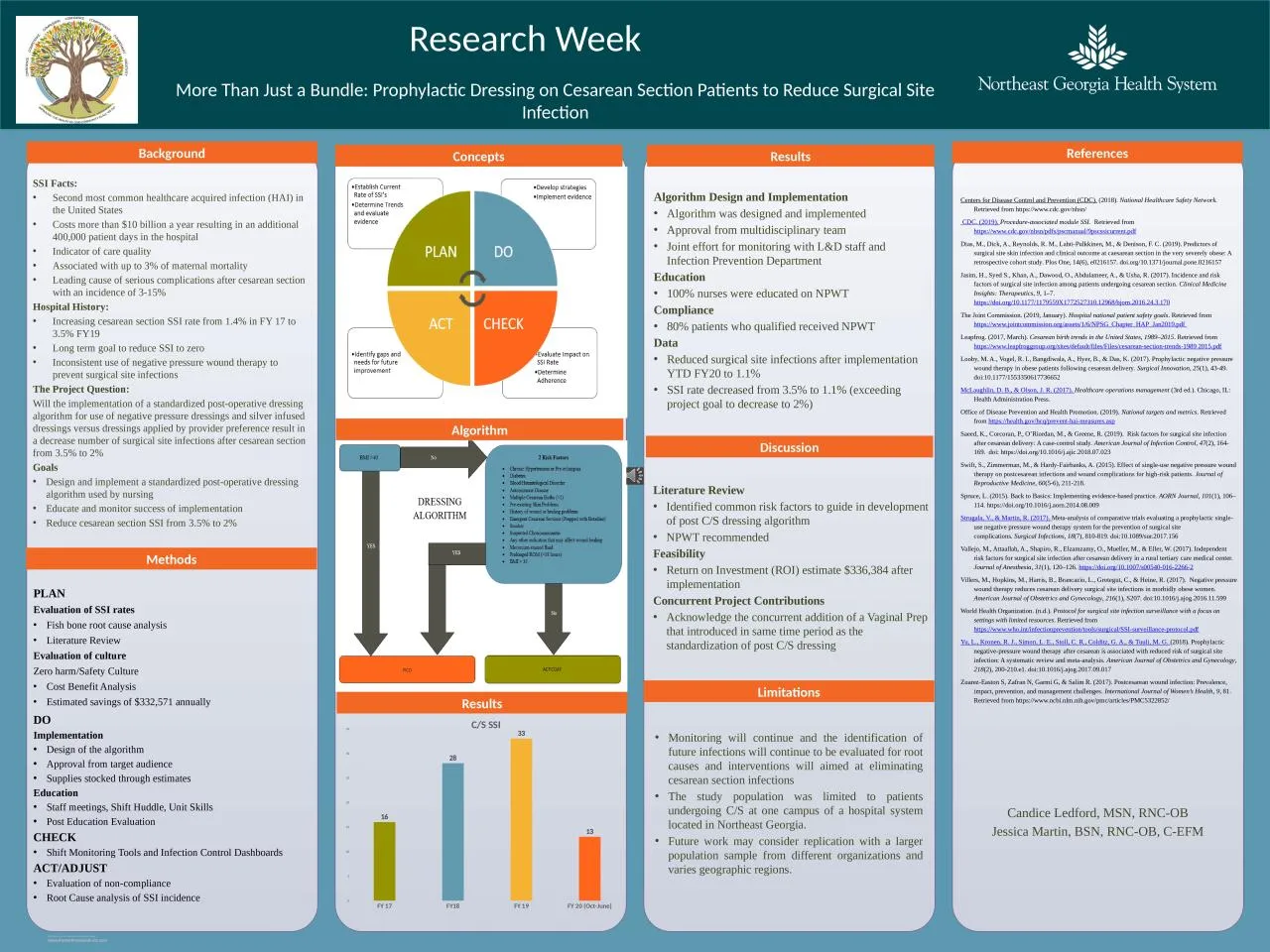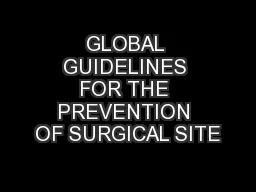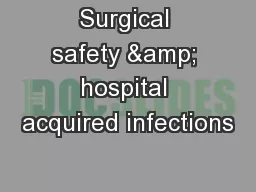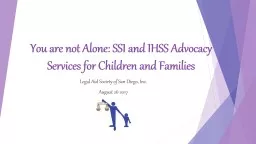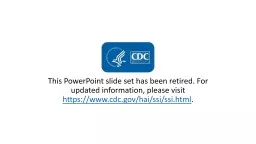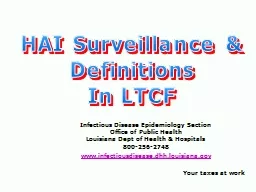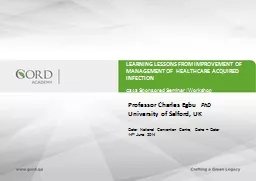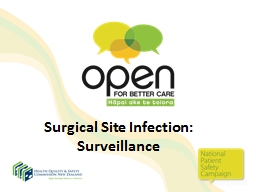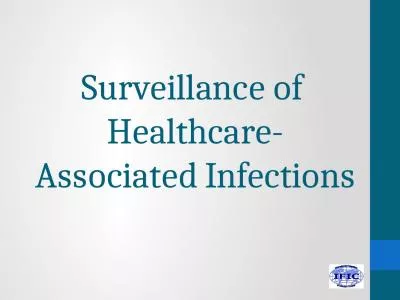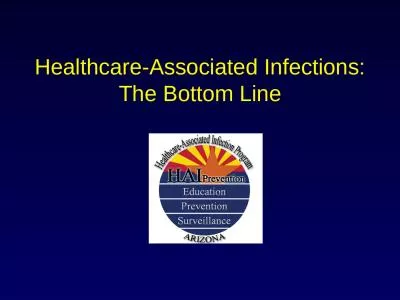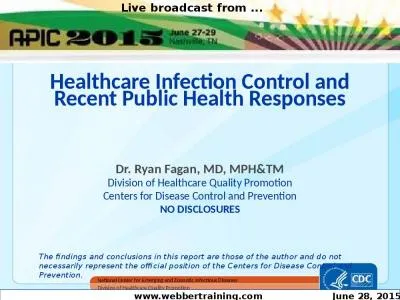PPT-SSI Facts: Second most common healthcare acquired infection (HAI) in the United States
Author : jacey | Published Date : 2022-06-01
Costs more than 10 billion a year resulting in an additional 400000 patient days in the hospital Indicator of care quality Associated with up to 3 of maternal mortality
Presentation Embed Code
Download Presentation
Download Presentation The PPT/PDF document "SSI Facts: Second most common healthcare..." is the property of its rightful owner. Permission is granted to download and print the materials on this website for personal, non-commercial use only, and to display it on your personal computer provided you do not modify the materials and that you retain all copyright notices contained in the materials. By downloading content from our website, you accept the terms of this agreement.
SSI Facts: Second most common healthcare acquired infection (HAI) in the United States: Transcript
Download Rules Of Document
"SSI Facts: Second most common healthcare acquired infection (HAI) in the United States"The content belongs to its owner. You may download and print it for personal use, without modification, and keep all copyright notices. By downloading, you agree to these terms.
Related Documents

